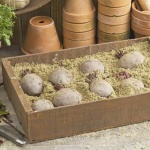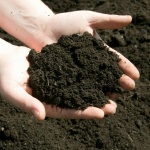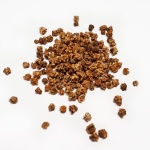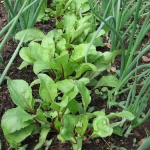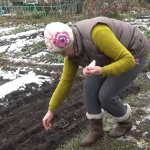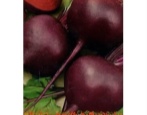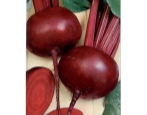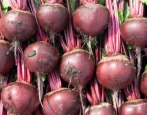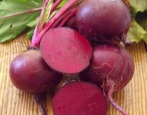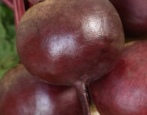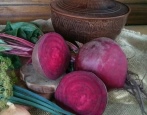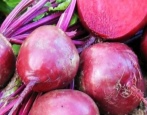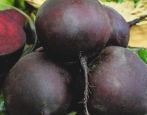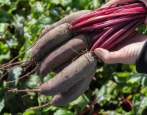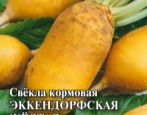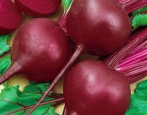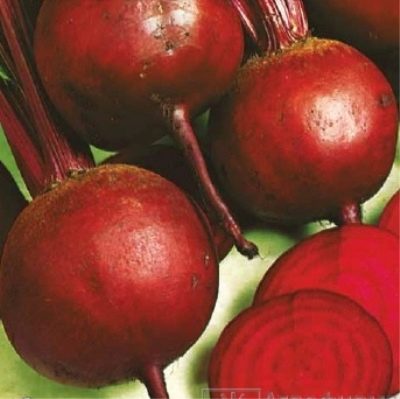
- Name synonyms: Czerwona Kula
- Year of approval: 1988
- Leaf rosette shape: upright
- The form: rounded
- Weight, g: 150-250
- Pulp color : burgundy
- Ringiness: no ringing
- Taste qualities: good ones
- Appointment: for culinary processing, for canning, for fresh use
- Storage: suitable for winter storage
This variety was allowed for use in 1988. The variety is a dining room. It is considered an unpretentious variety; such beets can be planted in regions with a temperate climate. The culture also has the name Czerwona Kula.
Description of the variety
Chervona kula was bred by Polish breeders. It easily adapts to humid climates and high humidity levels. This species can withstand frosts down to -5 degrees. At elevated temperatures, the variety will slow down in its growth.
This variety is considered to be quite resistant to a variety of diseases and parasites. It will allow you to get a healthy and plentiful harvest of vegetables.
Characteristics of the appearance of the plant and root crops
Plants grow well. Moreover, the bushes themselves are quite compact. The rosette of leaves on them is erect. The leaf plates are oval, their color is dark green. On them you can see pronounced purple streaks. The petioles on the vegetation are quite high.
Root crops have a rounded shape. Their diameter is on average 6-10 centimeters. The weight of each fruit is 150-250 grams. Ripe lined vegetables. Their flesh is a rich burgundy color.
The beet pulp is homogeneous and juicy, crispy. Vegetables without ringiness. The peel on root crops is smooth. If necessary, they can be easily transported even over long distances.
Purpose and taste of tubers
This beet variety has good taste characteristics. The vegetables have a sweet taste. They are perfect for raw use, as well as for culinary processing and canning.
Maturation
Chervona kula beet belongs to the early varieties. The period from germination to harvest is 80-90 days.
Yield
This species boasts high yields. From 1 square meter of planting, it will be possible to collect an average of 6-7 kilograms of ripe root crops.
Growing and care
Sowing of seeds is carried out in late April - early May. The Chervona kula variety should be planted in well-lit areas. The best predecessors of this crop are potatoes, cucumbers, squash and onions.
After planting, the beets will need proper care. Caring for this variety is reduced to standard requirements. The culture needs to be watered from time to time. You also need to carry out thinning, the beds should not be too closed with tops. Vegetation also needs fertilizers, preventive treatments with insecticides.
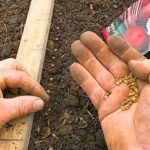
Beetroot tolerates cold snaps, therefore it is widely grown in the open field. When planting beets, you need to correctly determine the sowing time, choose a suitable place, prepare the beds, and do pre-sowing seed treatment.
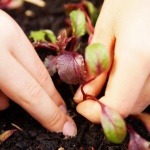
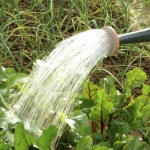
Disease and pest resistance
Chervona kula is considered to be quite resistant to both diseases and various pests. But nevertheless, sometimes beets of this species are affected by cercosporosis, peronosporosis, phomosis, powdery mildew, fusarium. Most often, with such diseases, the leaf blades are first affected. Then the infection spreads to the stems, the root system.
Diseases develop, as a rule, in wet weather and high temperatures. To cure the affected vegetation, ready-made fungicides can be used.
In addition, on such a culture, you can often see beet root aphids, flea beetles, weevils, and nematodes. They feed on plant juices and are capable of destroying the entire crop. To get rid of these pests, insecticide treatments should be performed.

Review overview
Most of the gardeners left positive feedback on the Chervona Kula beetroot variety. Separately, it was said that this species is absolutely unpretentious in care after planting. Even without fertilization, the plants will produce a full harvest.
In addition, it was noted that this variety allows you to get fairly large and healthy root crops with excellent taste, so they can be used in the preparation of various dishes, as well as for fresh consumption.
Some gardeners have noticed that this variety has good germination. Ripe fruits tolerate storage in a cellar well. But before that, they should be dried. During storage, they will not lose their taste and useful properties.
